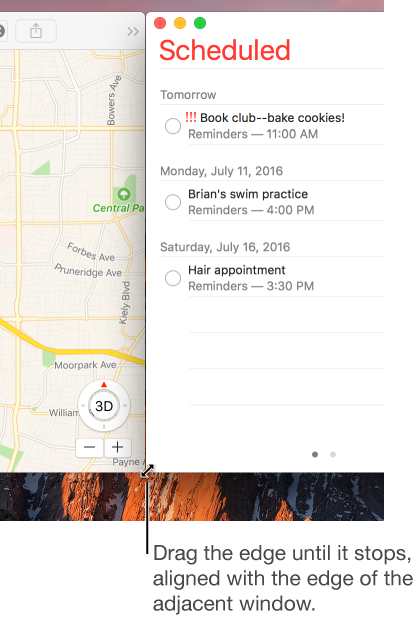This tutorial provides ten useful tips for getting the most out of Mac’s built-in controls for resizing, minimizing, maximizing, and moving app windows around.
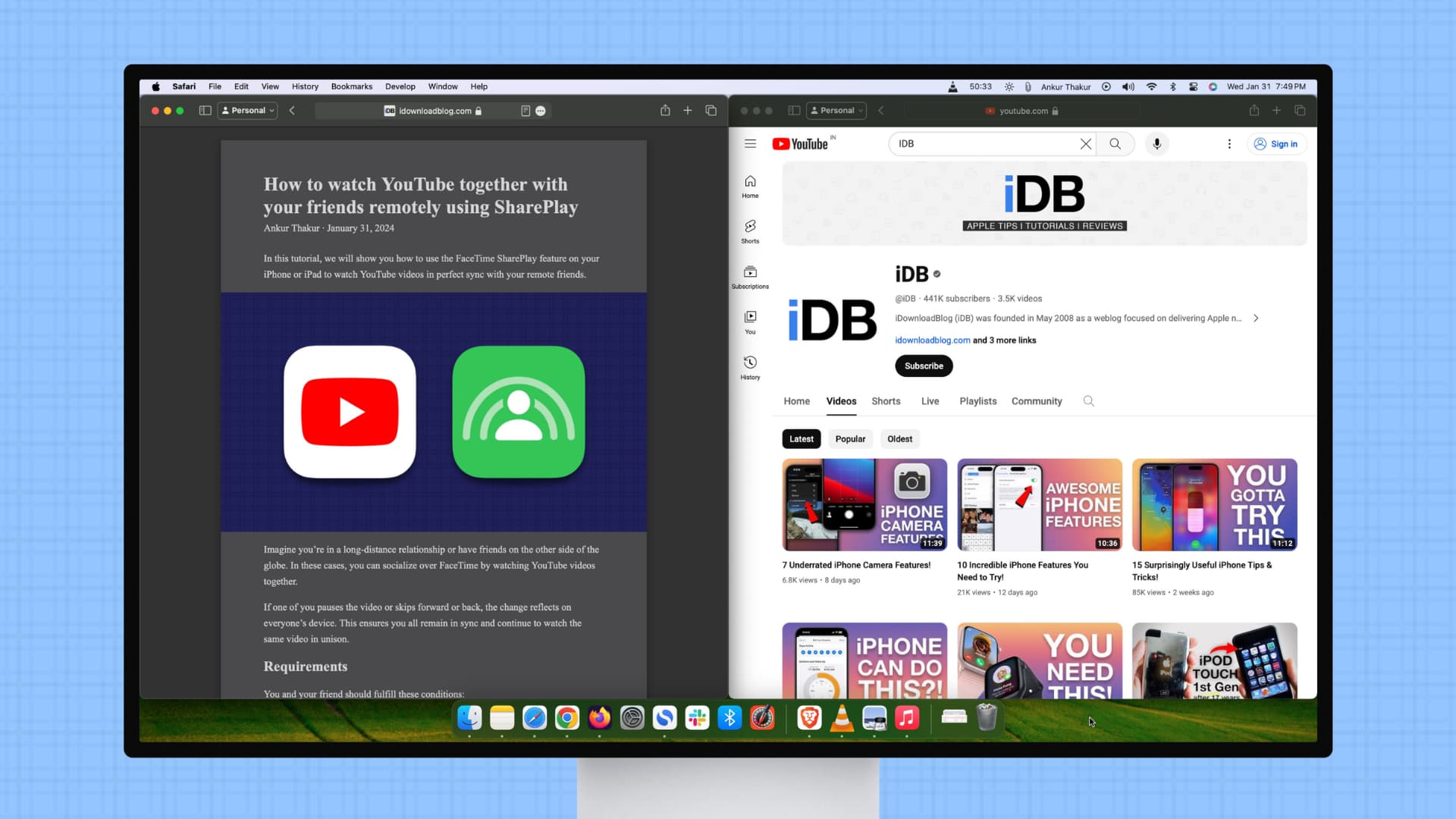
Minimize app windows
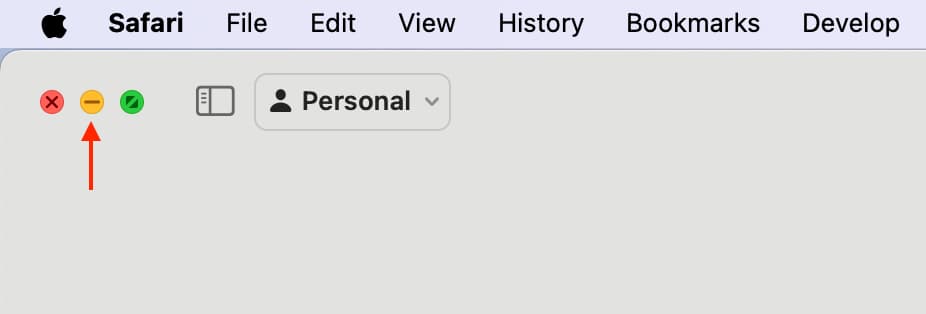
You have three ways to do that:
- Click the yellow minimize button located in the window’s top-left corner
- With the app open and the window selected, press the Command + M keys on your keyboard.
- Double-click the top title bar of the app window. But if it zooms the window instead of minimizing, go to System Settings > Desktop & Dock and set “Double-click a window’s title bar to” Minimize.
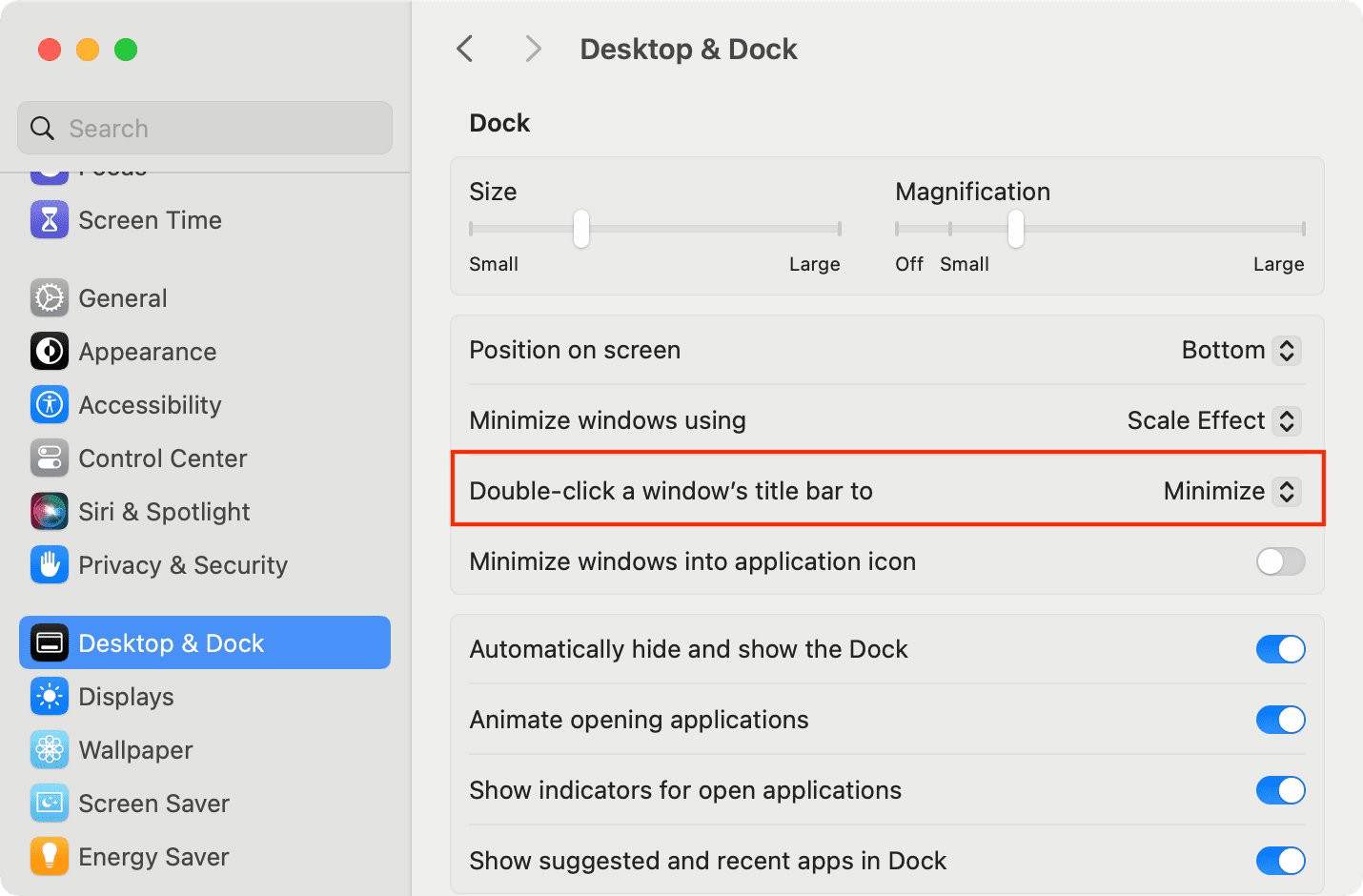
Tips:
- By default, app windows minimize into the rightmost section of the Dock, between the vertical separator and the Trash icon. But do you want to have app windows minimize into their app’s icon so they don’t take up valuable space in the Dock? Turn on the switch for “Minimize windows into application icon” in System Settings > Desktop & Dock.
- Not a fan of the default Genie effect when minimizing the app windows? To replace it with the more traditional scaling effect, choose Scale Effect next to “Minimize windows using.”
Maximize app windows
Click the green maximize button from the top left of the app window to put it on the full screen. Doing so will hide the Dock as well as the top menu bar. Follow the same action to exit this mode.
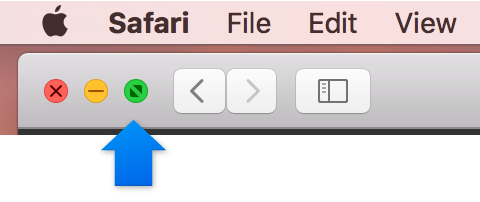
You have the option to set your Mac to show the top menu bar even when your app is on full screen.
Note: Not all apps support full-screen mode. For such apps, this action will simply expand the window and leave your Mac’s menu bar and the Dock visible.
Tip: How about getting a bigger window without going fullscreen? To do that, hold the Option key while clicking the maximize icon, and it will enlarge the app’s window instead of invoking fullscreen mode. If the window is already maximized, clicking the button with the modifier key held will reset the window to its previous state.
Close Mac windows

To close a window, click the red close button in its top-left corner or press the Command + W shortcut on the keyboard.
Closing windows of apps that are functionless without windows (e.g., Photos) also quits them, though some do remain open when their windows are closed, including Music, Messages, Mail, Pages, Keynote, Numbers, and more.
If you have multiple windows open in an app, closing one of them won’t close or quit the app unless you specifically select the Quit command from the app’s menu or press the Command + Q combination on the keyboard.
To quickly close all open windows in your app at once, hold the Option key while clicking the app’s File menu, then select the Close All option or use the Option + Command + Q shortcut on the keyboard.
Your Mac can automatically reopen any windows that were open when you quit the app. To enable this behavior, go to System Settings > Desktop & Dock and turn off “Close windows when quitting an app.”
Move Mac windows
Stop me if you already know this!
You can move a window by dragging it by its title bar to where you want it.
What you may not have known about is a handy three-finger trackpad gesture that lets you move windows around with three fingers on the trackpad. This option is disabled by default and buried in Accessibility settings. But you can easily turn on three-finger drag in System Settings. From a productivity standpoint, there really is no reason why you shouldn’t enable this option. The gesture not only lets you move windows around without clicking anything, but you can also text in apps like a boss and more.
Hide open app windows
To hide the active app, invoke the Command + H shortcut on the keyboard. Alternatively, you can click the app’s name next to the Apple icon and choose the Hide app name option.
To hide the windows of all open apps sans the active one, use the keyboard shortcut Option + Command + H or select the Hide Others option from the app’s menu.
Related: The difference between Minimizing and Hiding apps on Mac
Resize app windows
To manually resize a Mac app window, drag its edge on the top, bottom, or sides.
Tip: Wanna maximize the window from one of its sides? No problem; just double-click one of its edges to automatically expand that particular side of the window.
Snap two apps in each half
Make sure the two apps you want to work with are open on the screen.
Place the mouse pointer over the green maximize button, but don’t click it, and you will see a menu pop out. Now, hold the Option key and select Move Window to Left Side of Screen or Move Window to Right Side of Screen. Now, do the same for the other app window.
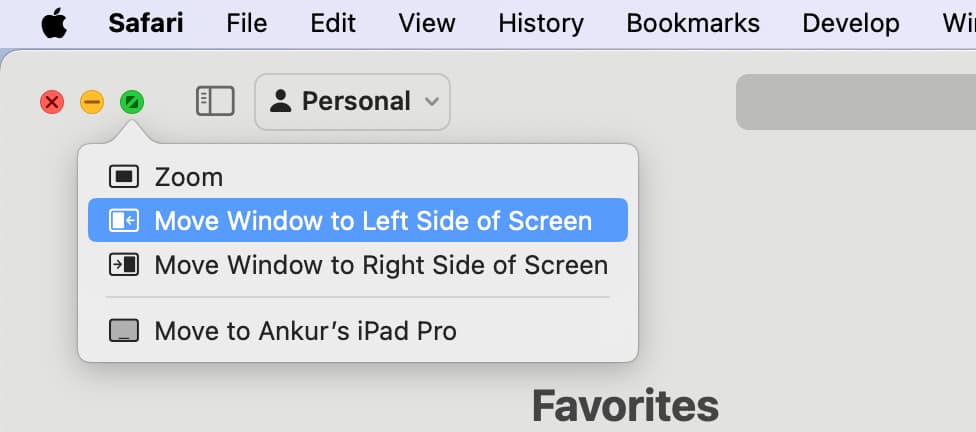
Use Split Screen
Like the above tip, you can use Split Screen to put two apps side-by-side on the same screen. The difference is that in Split Screen, the apps are in full-screen mode with the Dock and menu bar hidden. You can also resize the window size.
Using snapping to align windows
To see snapping in action, start by dragging a window close to another one. As it nears the other window, macOS aligns it automatically without overlapping.
You can position multiple windows adjacent to each other.
Using Tabs

By default, your Mac opens documents in tabs only when an app is fullscreen.
Thankfully, macOS includes an optional feature that forces all document-based apps to automatically open new documents in tabs rather than in windows.
To enable this feature, venture over to System Settings > Desktop & Dock, and set “Prefer tabs when opening documents” to:
- Always: New windows will always open in tabs
- In Full Screen Only: Only fullscreen apps will open documents in tabs
- Never: Create a tab manually by pressing Option + Command + N
You’re wholeheartedly recommended to use tabs on your Mac instead of windows whenever possible. Besides, having documents open in tabs instead of separate windows greatly reduces clutter on the desktop.
Tip: No tab bar in your app? Show it by choosing Show Tab Bar from the View menu.
Here are some things you can do with tabs in apps and the Finder:
- Add a new tab: Click the New Tab button in the tab bar tab or choose New Tab from the File menu.
- Reorder tabs: Drag an app’s tab left or right
- Close a tab: Click the “x” symbol inside the tab
- Close all tabs except the current one: Option + click “x” of the tab you’re in
- Go to the next tab: Press Control + Tab
- Go to the previous tab: Press Control + Shift + Tab
Tip: There’s a faster method to skim through your tabs like a pro. First, click a tab in an app, then simply swipe left or right in the tab bar with two fingers on the trackpad to quickly scroll your tabs horizontally.

You can also create new tabs using handy keyboard shortcuts.
- If the tab option is set to Always or In Full Screen Only in Dock preferences, using the Command + N keyboard shortcut to create a new window will add a new tab.
- When the tab option in Dock preferences is set to Never, press Option + Command + N to add a new window.
- If the tab option in Dock preferences is set to Always or In Full Screen Only and you want to quickly create a new window, just press Option + Command + N on the keyboard.
To merge multiple windows within an app into one window that contains multiple tabs, choose Merge All Windows from the app’s Window menu.
If you’d rather make a single tab a separate window again, simply drag the tab out of the window. You can also right-click over the tab name and select Move Tab to New Window or do that from the app’s Window menu.
For a detailed overview of tabs in macOS and merging/splitting windows, see our dedicated tutorial.
Want new Finder windows to open in the size you want? There’s a how-to for that!
